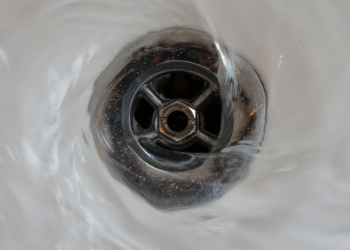Replacing a residential oil tank can feel overwhelming for homeowners who have never gone through the process before. These systems are critical for heating and comfort, yet they eventually reach the end of their lifespan and must be updated. Understanding what the process involves helps families prepare, budget, and make confident decisions when the time comes.
Why Replacements Become Necessary
Oil tanks typically last between 15 and 25 years, depending on the material, installation quality, and maintenance. Over time, rust, corrosion, or leaks can compromise their safety and performance. In many cases, tanks show visible warning signs such as rust spots, damp patches, or persistent odors around the system.
Rather than waiting for a failure, homeowners are encouraged to schedule oil tank replacements before problems escalate. A planned replacement ensures minimal disruption and avoids the high costs associated with emergency services.
Preparing for the Replacement
The first step is typically an inspection. A professional technician will assess the tank’s condition, identify safety concerns, and recommend whether a replacement is required. At this stage, homeowners also receive guidance on the best options for their property, including tank size, materials, and placement.
Once the decision is made, preparation begins. This can include:
- Clearing access to the installation area.
- Arranging permits if required by local regulations.
- Coordinating with contractors for removal and disposal of the old tank.
Being prepared ensures the process moves smoothly without unnecessary delays.
Removing the Old Tank
The removal phase is handled by trained professionals to ensure safety and compliance with environmental standards. Oil is pumped out of the existing tank, residue is cleaned, and the tank itself is carefully disconnected.
For above-ground tanks, removal is often straightforward. Underground systems, however, may require excavation, which can add time and cost. In either case, technicians follow strict safety procedures to prevent spills and contamination.
Installing the New System
Once the old unit is removed, installation of the new tank begins. The process involves securing the tank on a stable foundation, connecting lines, and testing for leaks or pressure issues. Modern tanks often feature corrosion-resistant materials, double-wall protection, and monitoring systems that improve safety and efficiency.
Installation times vary depending on the type of tank and complexity of the setup, but most residential replacements can be completed within a day or two.
Costs and Budgeting
The price of oil tank replacements varies based on several factors:
- Tank size: Larger tanks are more expensive to purchase and install.
- Material type: Fiberglass and double-walled tanks typically cost more but last longer.
- Location: Basements, crawl spaces, and underground tanks require more labor.
- Environmental concerns: Leaks or contamination may increase overall costs.
Homeowners should plan for these variables when budgeting. While replacements may feel expensive, they ultimately protect property value and prevent more costly emergencies.
Safety and Environmental Protection
One of the biggest concerns with aging tanks is the risk of leaks. Even small leaks can contaminate soil and groundwater, creating environmental hazards that require expensive cleanup. By replacing old systems proactively, homeowners avoid these risks and ensure compliance with local safety regulations.
Professional contractors also handle disposal responsibly, ensuring that old tanks and residue are managed according to environmental standards.
Benefits of Modern Tanks
Today’s oil tanks are designed with advancements that improve safety and longevity. Features like double-wall construction, leak detection systems, and corrosion-resistant materials make them more reliable than older models.
These upgrades not only reduce maintenance needs but also provide peace of mind that the system will continue to operate safely for years to come.
Planning Ahead for Success
The best replacements are those that are planned in advance rather than performed in an emergency. Homeowners should schedule regular inspections and budget for eventual replacement once their tank nears the end of its lifespan.
Working with experienced professionals ensures the process is efficient, safe, and customized to the needs of the home.
Final Thoughts
Replacing a home oil tank may seem intimidating, but understanding the steps involved makes the process far less stressful. With proper preparation, professional guidance, and an eye toward long-term reliability, homeowners can approach this necessary upgrade with confidence.












